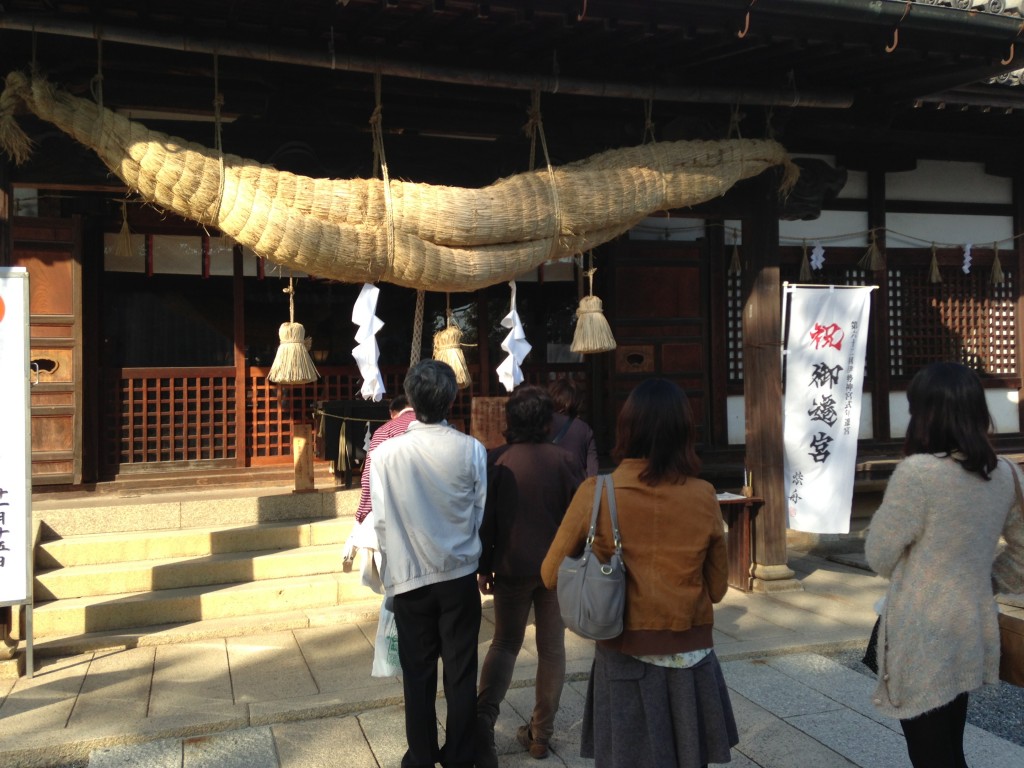
The Worship Hall at Achi Shrine with an Izumo-style shimenawa rope
The town of Kurashiki which lies west of Okinawa city on the way to the Inland Sea, boasts a very attractive historical area. The well-preserved buildings host a variety of craft shops, cafes and galleries centred around a small canal and a former cloth factory built in the English style with brick and rounded windows.
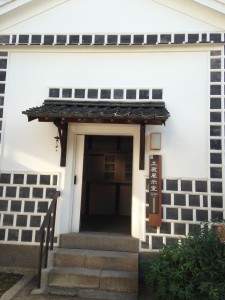
Typical example of the conservation area architecture in Kurashiki
On the hill overlooking the historical area is Achi Shrine, which dates back to the time of the legendary Emperor Ojin according to Nihon Shoki (720). In 1990 the shrine celebrated its 1700th anniversary. In other words, it’s ancient and the origins lost in the mists of time.
The shrine’s origins lay with the Achi clan who settled in the area and were immigrants from the continent. The main deities worshipped are the Munekata Sisters, who were the daughters of Susanoo and had strong links with Kyushu. Perhaps the Achi clan adopted them while stopping off on their migration from Korea along the Inland Sea.
Among the interesting features in the shrine’s grounds is an iwasaka group of sacred rocks. These are supposed to be the origins of the shrine, and speak of Korean shamanistic roots. The shrine pamphlet ascribes them a yin~yang presence and suggests they speak to the Chinese legendary paradise of Horai.
Elsewhere there’s an unusual mikuji (fortune slip) arrangement centred around a mokkoku tree and split into the twelve Chinese zodiac signs. A notice board says the tree is the longest-living in the shrine grounds and associated with making good relationships. You thereby get good luck plus Chinese zodiac fortune.
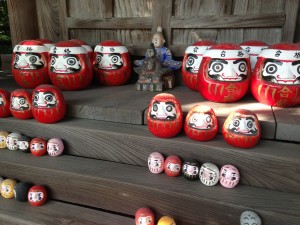
Daruma at the Sugawara no Michizane subshrine
The shrine lists 21 kami in its pamphlet, including all the subshrines in the grounds. One of them is for Tenjin (ancestral spirit of Sugawara no Michizane), the kami for learning, and his subshrine was filled in syncretic fashion with small Daruma dolls (honouring Bodhidharma, founder of Zen). The idea is that you paint in one eye when making a vow, and the other eye when succeeding. All of them had two eyes, I noticed; what happens to those who fail?
The Honden is presently under repair, but from the hill are god views over Kurashiki – the reason of course the site was chosen in the first place. One of the words for shrine is miya, the same word used formerly for palaces and the residences of august princes. Perhaps here on the hill was once the palace of an Achi leader, made into a shrine after his death to honour his memory. At any rate it’s a typical example of the ujigami (clan kami) shrine, and it exemplifies the role of ancestor worship in Shinto. Like Native American tribes, honouring one’s predecessors is an important part of cultural identity.
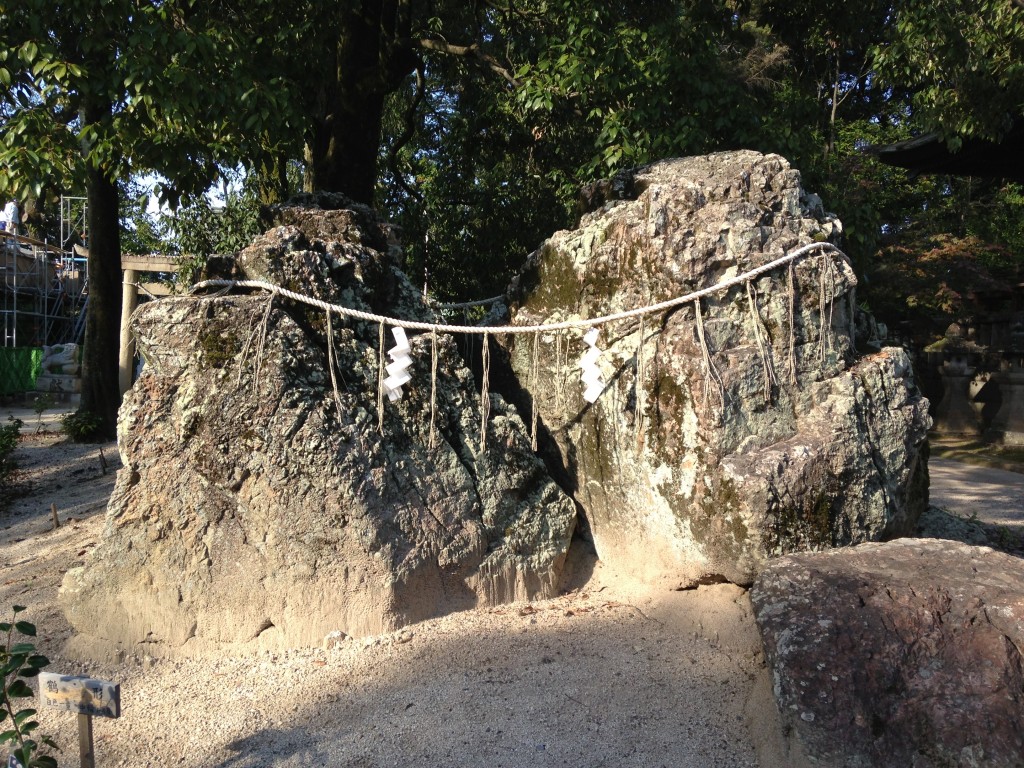
The iwasaka rocks at Achi Jinja speak to the ancient rock worship of an immigrant clan
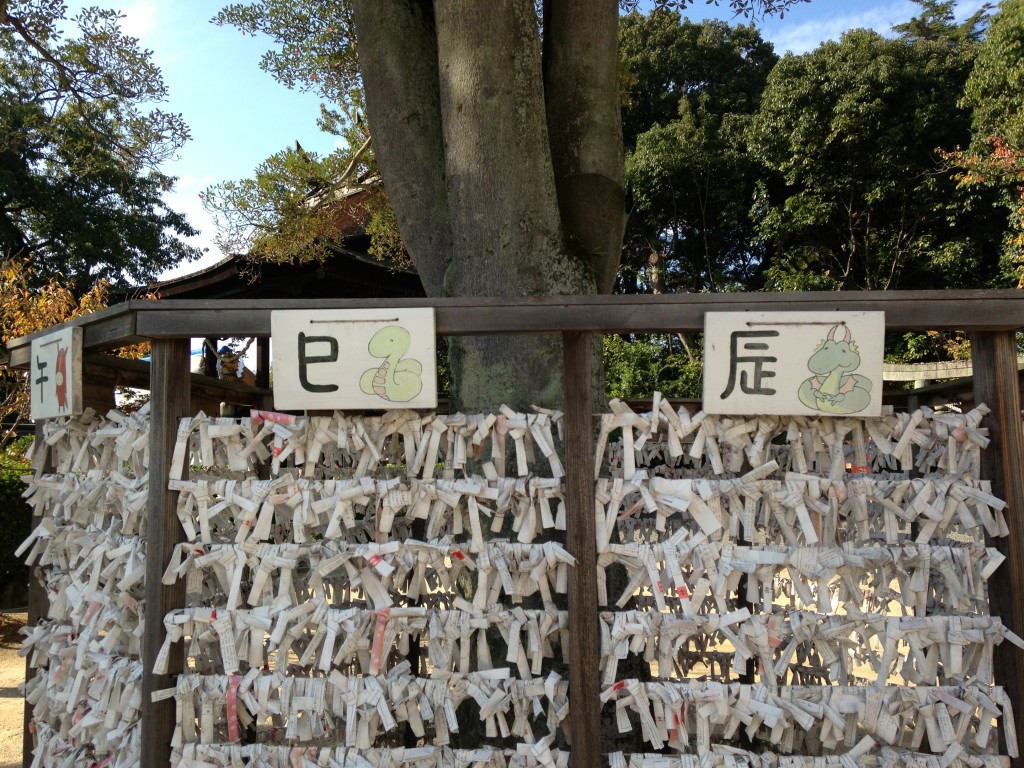
Unusual arrangement for tying one's fortune slips according to the Chinese zodiac year of one's birth
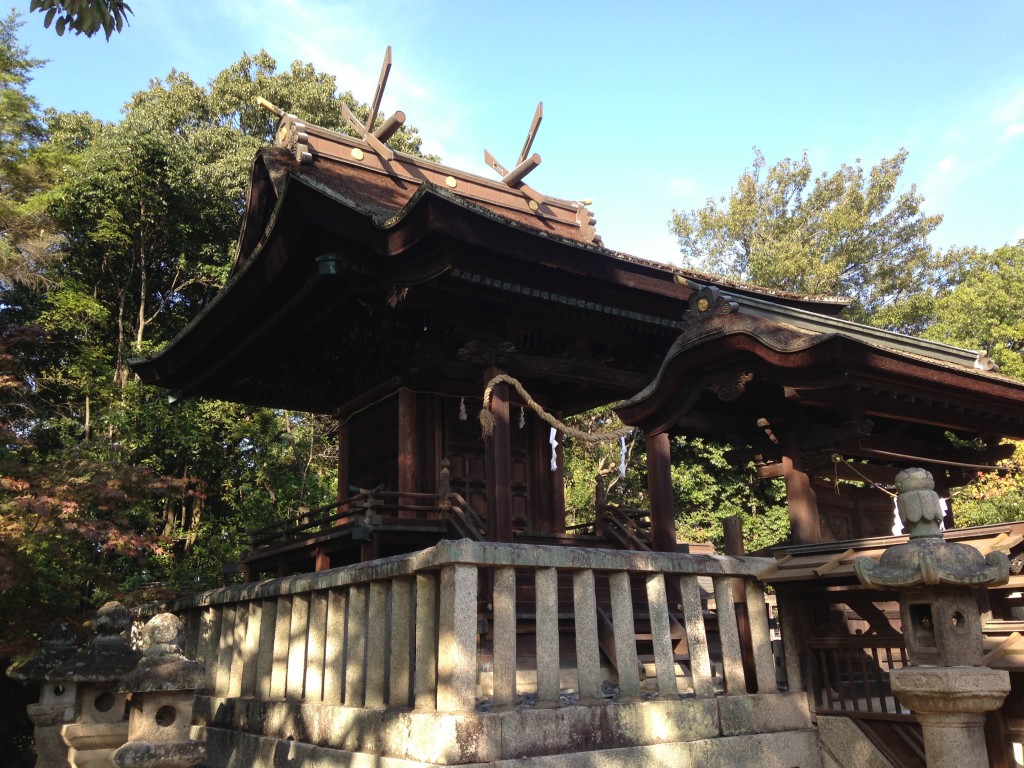
The Honden kami sanctuary in Izumo-style architecture
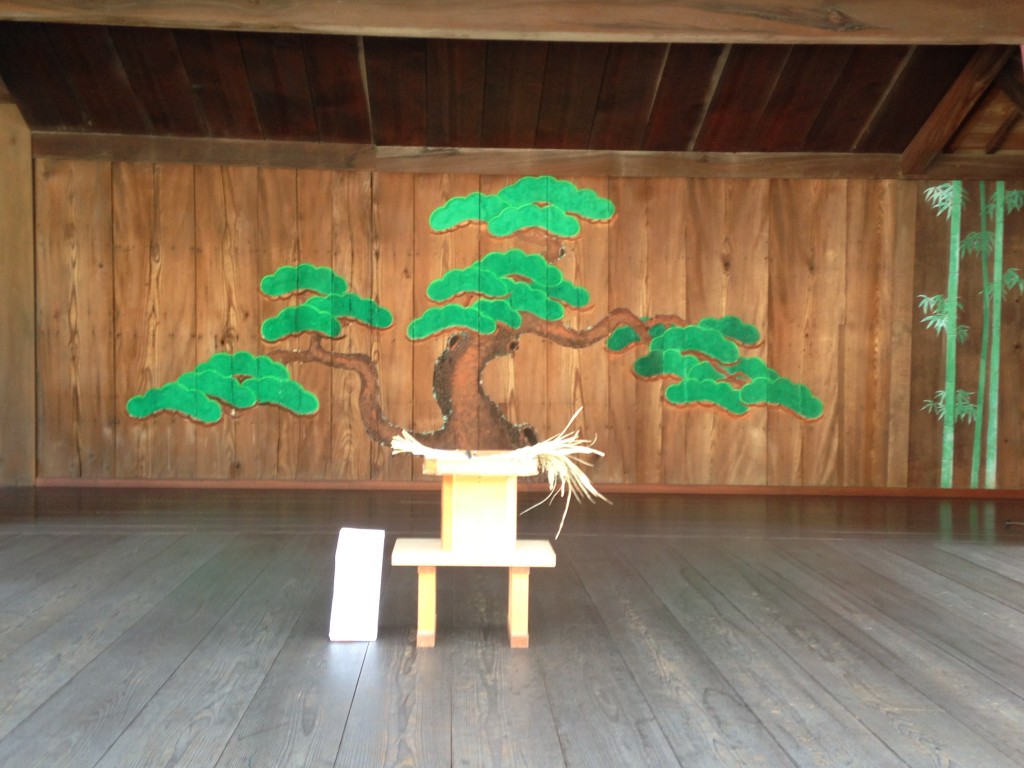
The shrine boasts a Noh stage, showing its cultural inclinations (it's used for kagura dance performances for the kami)

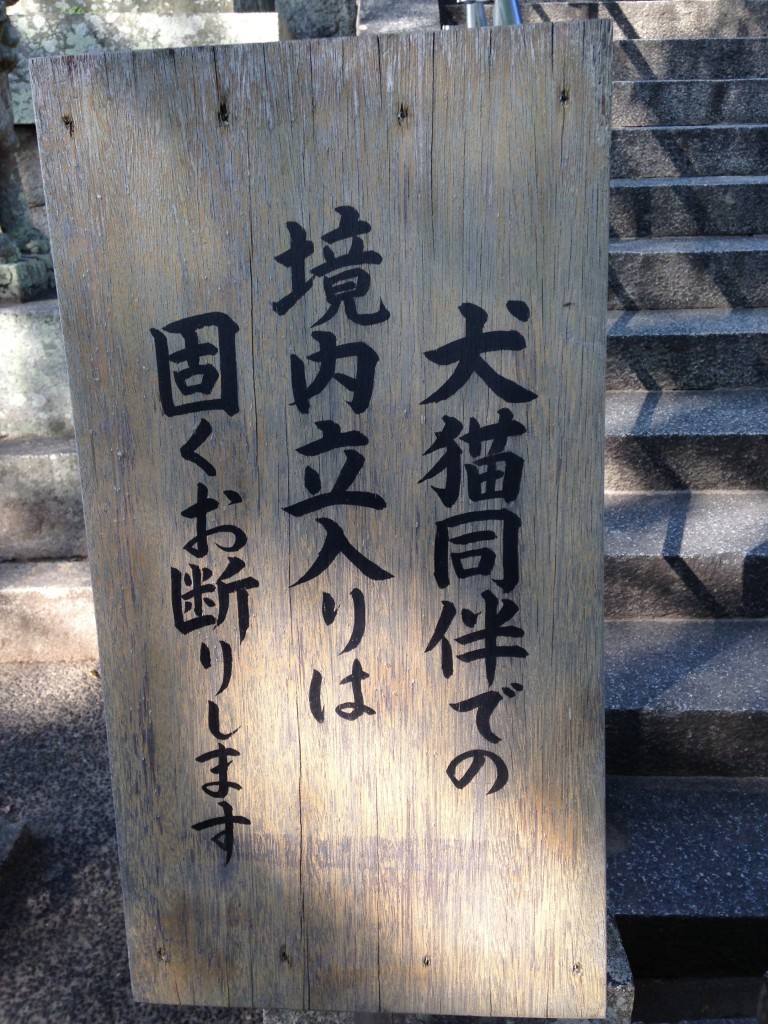
My wife and I visited Kurashiki and the Achi Shrine in May this year. I’ve just been going through my photographs and found your website most useful in explaining not only what we saw at Achi-jinja but also generally throughout Japan. Thank you very much for your clear explanations and the accompanying photographs. I have bookmarked your website and will use it as a reference from now on. I would recommend a visit to Kurashiki to anyone who comes to Japan.
Thank you very much for the input, Jovan. It’s very encouraging to have such feedback and I’m glad you enjoyed the visit to Kurashiki and the shrine. While the old shops and buildings of the small Kurashiki conservation area are very attractive, most people miss the interesting shrine on the hill next to it…